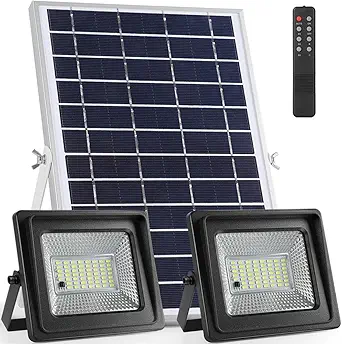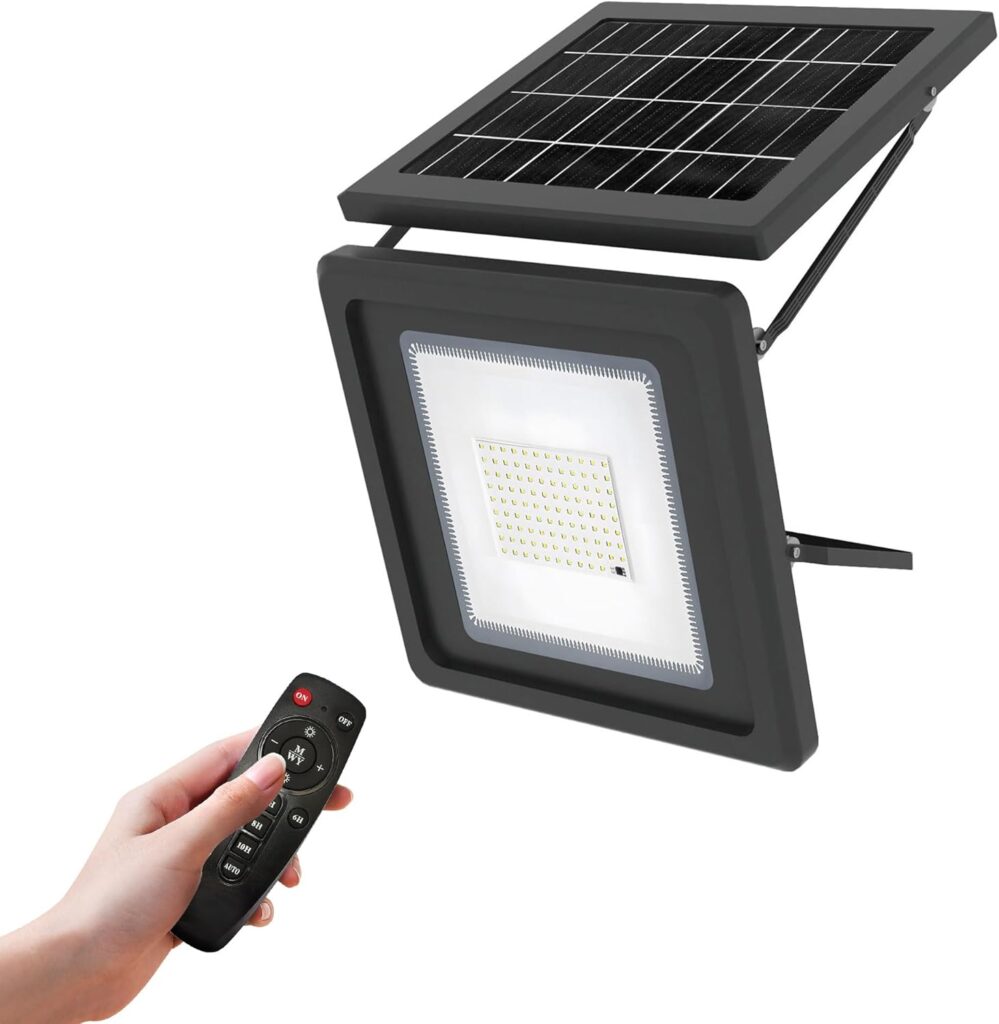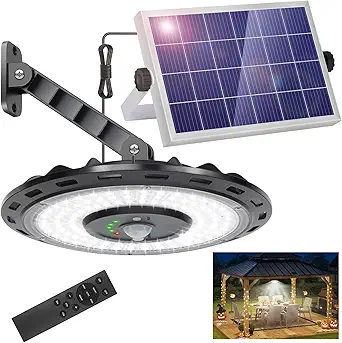Introduction
Solar powered flood lights are an energy-efficient and eco-friendly lighting solution that has gained immense popularity in recent years. These lights harness the power of the sun to illuminate large areas, making them ideal for outdoor spaces like yards, driveways, parking lots, and sports fields. Join 10bet for exciting casino action in India, where high-stakes gaming meets unparalleled entertainment. Immerse yourself in dynamic play with jeetbuzz 123 com, where precision, strategy, and opportunity merge for maximum excitement. Their combination of high brightness and environmental sustainability makes them a preferred choice for both residential and commercial applications. Online sports betting apps offer a modern way to bet on sporting events around the world. Players benefit from comprehensive betting options, mobile applications, online casino bonus without deposit Austria and user-friendly interfaces. In this guide, we will explore everything you need to know about solar powered flood lights, including their benefits, working mechanism, types, installation process, and maintenance tips.

What Are Solar Powered Flood Lights?
Solar powered flood lights are outdoor lighting systems that use solar panels to convert sunlight into electricity. This electricity is stored in batteries and used to power high-intensity LED lights, which provide bright and widespread illumination. Flood lights are designed to cover large areas with uniform light, making them perfect for enhancing security, visibility, and safety.
Benefits of Solar Powered Flood Lights
- Energy Efficiency: By using solar energy, these lights reduce dependency on traditional electricity, lowering energy consumption and utility bills.
- Environmentally Friendly: Solar flood lights contribute to a greener planet by utilizing renewable energy and reducing carbon emissions.
- Cost Savings: Apart from the initial investment, there are minimal operational costs since they rely on free solar energy.
- Enhanced Security: Bright and reliable lighting deters intruders and ensures safety in outdoor spaces.
- Easy Installation: With no wiring required, solar flood lights are simple to install, even in remote areas.
- Low Maintenance: High-quality components and durable materials make these lights long-lasting and easy to maintain.
- Independence from the Grid: They are ideal for areas without access to electricity, providing a reliable lighting solution in off-grid locations.
How Do Solar Powered Flood Lights Work?
- Solar Panels: During the day, the solar panels absorb sunlight and convert it into electricity using photovoltaic cells.
- Battery Storage: The generated electricity is stored in rechargeable batteries for use during the night.
- LED Lights: Light-emitting diodes (LEDs) are used in flood lights due to their high brightness, energy efficiency, and long lifespan.
- Controller: A built-in controller manages the charging of the battery and the operation of the light, ensuring efficient performance.
- Light Sensor and Timer: Many solar flood lights are equipped with sensors or timers to automatically turn on at dusk and off at dawn, conserving energy.
Types of Solar Powered Flood Lights
- Motion Sensor Flood Lights: These lights activate when motion is detected, making them ideal for security purposes.
- All-in-One Flood Lights: Compact and integrated designs that include the solar panel, battery, and light in a single unit.
- Separate Panel Flood Lights: These have a separate solar panel, allowing more flexibility in positioning the light and panel for optimal sunlight exposure.
- Decorative Flood Lights: Designed to enhance the aesthetics of outdoor spaces while providing illumination.
- High-Powered Flood Lights: Suitable for large areas like stadiums or commercial properties, offering extremely bright light.

Factors to Consider When Choosing Solar Powered Flood Lights
- Brightness: Measured in lumens, select a light with adequate brightness for your specific needs.
- Battery Capacity: A higher battery capacity ensures the light can operate for longer hours.
- Solar Panel Efficiency: Look for panels with high efficiency to maximize energy conversion, especially in low-sunlight areas.
- Durability: Choose weatherproof and robust materials to withstand outdoor conditions.
- Installation Location: Consider the area you want to illuminate and ensure the light’s range and angle cover it effectively.
- Smart Features: Some lights come with additional features like remote control, adjustable settings, and smart sensors.
Installation Guide for Solar Powered Flood Lights
- Select the Location: Choose a spot with maximum sunlight exposure for the solar panel.
- Assemble the Components: Follow the manufacturer’s instructions to assemble the light and solar panel.
- Mount the Solar Panel: Secure the panel at an angle that receives optimal sunlight throughout the day.
- Position the Light: Install the light to cover the desired area. Use brackets or stakes as required.
- Connect and Test: Ensure the solar panel and light are properly connected. Test the system to confirm it’s working correctly.
Maintenance Tips for Solar Powered Flood Lights
- Clean the Solar Panels: Regularly remove dust and debris to maintain efficient energy absorption.
- Check the Battery: Replace the rechargeable batteries if they show signs of reduced performance.
- Inspect the Light and Wiring: Periodically check for damage to the light or connections and address any issues promptly.
- Protect During Severe Weather: If possible, store or shield the lights during extreme weather conditions.
Applications of Solar Powered Flood Lights
- Home Security: Install around entrances, driveways, and backyards to enhance safety and deter trespassers.
- Commercial Properties: Use in parking lots, warehouses, and construction sites for reliable lighting.
- Sports Fields: Illuminate large areas like stadiums or playgrounds for nighttime activities.
- Public Spaces: Provide lighting in parks, community centers, and streets for public safety.
- Event Lighting: Use portable solar flood lights for outdoor events, camping, or emergency situations.
Advantages Over Traditional Flood Lights
- No Wiring Required: Solar flood lights are wireless, making them easier to install and relocate.
- Eco-Friendly Operation: They utilize renewable energy, reducing the environmental impact.
- Cost Efficiency: Save on electricity bills and reduce maintenance expenses.
- Energy Independence: Operate independently of the electrical grid, ensuring functionality during power outages.

Challenges and Solutions
- Limited Sunlight: In areas with less sunlight, opt for high-efficiency solar panels or lights with larger batteries.
- Weather Impact: Choose weather-resistant models to handle rain, snow, and extreme temperatures.
- Initial Cost: While the upfront cost may be higher, the long-term savings outweigh the initial investment.
Innovations in Solar Powered Flood Lights
- Smart Technology: Integration with apps and remote controls for better management and customization.
- Improved Battery Life: Newer models feature lithium-ion or lithium phosphate batteries for longer lifespan and better performance.
- Higher Efficiency Panels: Advances in photovoltaic technology ensure better energy conversion, even in low-light conditions.
- Compact Designs: Sleeker and more versatile designs cater to aesthetic preferences and functional needs.